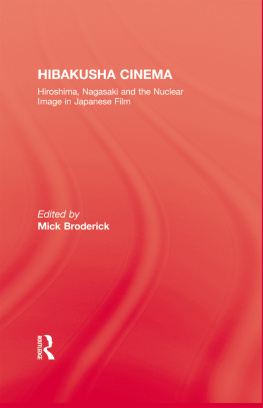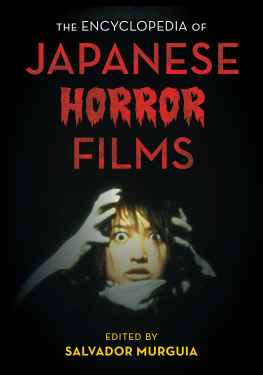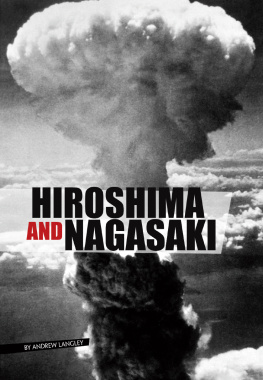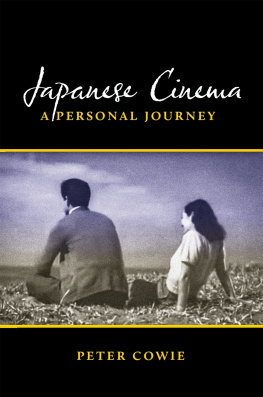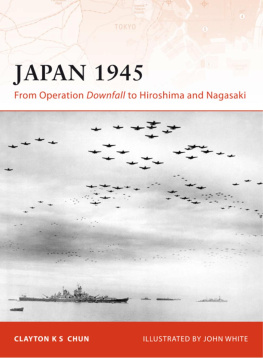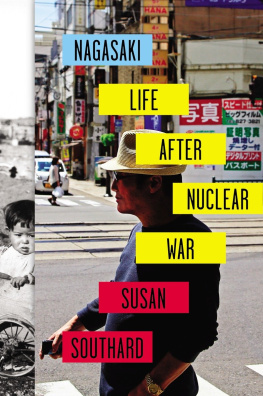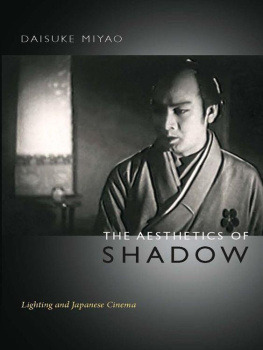HIBAKUSHA CINEMA

First published by Kegan Paul in 1996
This edition first published in 2009 by
Routledge
2 Park Square, Milton Park, Abingdon, Oxon, OX14 4RN
Simultaneously published in the USA and Canada
by Routledge
270 Madison Avenue, New York, NY 10016
Routledge is an imprint of the Taylor & Francis Group, an informa business
1996 Kegan Paul
All rights reserved. No part of this book may be reprinted or reproduced or utilised in any form or by any electronic, mechanical, or other means, now known or hereafter invented, including photocopying and recording, or in any information storage or retrieval system, without permission in writing from the publishers.
British Library Cataloguing in Publication Data
A catalogue record for this book is available from the British Library
ISBN 10: 071030529X
ISBN 13: 9780710305299
ISBN 13: 9781136883255 (ePub)
Publishers Note
The publisher has gone to great lengths to ensure the quality of this reprint but points out that some imperfections in the original copies may be apparent. The publisher has made every effort to contact original copyright holders and would welcome correspondence from those they have been unable to trace.
for Sinad
and her generation
moving out of the shadow
The following essays have been reprinted with permission:
Mono no Aware: Hiroshima in Film Copyright 1961 Donald Richie, reprinted with permission of the author.
The Imagination of Disaster from Against Interpretation by Susan Sontag. Copyright 1965, 1966 by Susan Sontag. Reprinted by permission Farrar, Straus & Giroux Inc.
Godzilla and the Japanese Nightmare: When Them! Is U.S. by Chon Noriega in Cinema Journal Vol 27:1 (Fall 1987) reprinted with permission.
Depiction of the Atomic Bombings in Japanese Cinema During the US Occupation Period by Kyoko Hirano, reprinted and revised from Mr Smith Goes to Tokyo: Japanese Cinema Under American Occupation, 194552 (Washington, DC: Smithsonian Institution Press), pages 5966, by permission of the publisher. Copyright 1992.
Akira Kurosawa and the Atomic Age by James Goodwin, reprinted with permission of Simon & Schuster Macmillan from the G. K. Hall book, Perspectives on Akira Kurosawa, edited by James Goodwin. Copyright 1994 by James Goodwin.
Several people have been instrumental in assisting this anthology to materialize from a vague notion back in the mid-1980s through to its final published form.
In particular: Professor Sugimoto Yoshio, Kegan Paul International Japan Studies Series Editor; Professor Paul Brains and ISSNTC colleagues; Chris Berry; Dr Damien Broderick; Michael Klosser and SFRA colleagues; Dr Ross Gibson; Professor Jeremy Butler and SCREEN-L; library and information staff at the Australian Film Commission, the Australian Film Institute, the University of Sydney Power Institute of Fine Arts and the Australian Film, Television and Radio School; Ronin Films; and Village Roadshow. For permissions: Lydia Zelaya, Simon and Schuster; Erika Seidman, Farrar, Straus & Giroux Inc.; Howard Watson, Random House UK Ltd; Catherine Jones, Smithsonian Institution Press; Paulette W. Curtis, University of Texas Press; Donald Richie; and Mary Flower, Grove Atlantic, Inc.
Special thanks go to all the writers assembled here, for their fine contributions and their patience and encouragement.
And, finally to Liz, for everything... mon amour.
Nostalgia and apocalyptic visions, even appeals to prior incarnations these are the means by which todays Japanese barely maintain their tenuous psychological equilibrium [...] Japan as a nation is well on its way to losing, to eradicating, history.
Inuhiko Yomata, 1991
Like any powerful text, Hiroshima must be read, absorbed, and recreated by each generation searching for its own truths.
Robert Lifton, 1987
The only language adequate to Hiroshima may then be the unconscious as it speaks in texts.
Peter Schwenger, 1992
Mick Broderick
The Japanese failure to come to terms with Hiroshima is one which is shared by everybody in the world today. No one has come to terms with the bomb least of all, perhaps, the people upon whom it was originally inflicted. When the thing itself has become the very epitome of chaos unleashed, it would be expecting too much that an ordered and directed reply could be instantly presented.
Donald Richie, 1961
When American film scholar and long-term resident of Japan, Donald Richie, wrote these words over thirty years ago, he was responding to the Japanese subgenre of cinema which had dealt with the atom bombings of Hiroshima and Nagasaki. Three decades on, the question lingers, does this appraisal remain valid? Have post-war generations come to terms with the bomb and what Hiroshima means? Are there now, or have there ever been, adequate and appropriate cinematic responses to these issues?
Hibakusha Cinema is an attempt perhaps momentarily to reorient critical focus upon a rarely discussed, yet important feature of Japanese cinema.
The essays collected here represent a mix of Japanese and western (pan-Pacific) scholarship harnessing multidisciplinary methodologies, ranging from close textual analysis, archival and historical argument, anthropological assessment, literary and film comparative analyses to psychological and ideological hermeneutics.
As Donald Richie reflected many years ago, the attitude to Hiroshima and Nagasaki has changed considerably in the [past] years. Hence, the chronological nature of this anthology is aimed at providing an historical approach to the hibakusha genre within its social context, i.e. rare and older commentary combined with new writing specially commissioned for this work.
But why a book on hibakusha cinema? Well, partly as a means of responding to the 50th anniversary of the atom bombings, respectively on 6 and 9 August 1995, and partly as a way of foregrounding often ignored popular culture responses to these catastrophic events which have informed much of the political, social, psychological and cultural milieu of the past five decades. This period is only now being recognised for the submerged eschatological anxieties and clandestine, anti-democratic activities performed by nation-states predicated as necessary in the atomic age.
As Michael Perlman has remarked,
We resist remembering Hiroshima and Nagasaki not only because of our tendencies to deny and avoid death, and also the nuclear reality; this resistance can also be imagined, not as ours, but as the resistance of place itself to the destruction of memories, of its distinct boundaries.
Hiroshima and Nagasaki evoke powerful and sombre associations of holocaust and apocalypse, a microcosm of the twentieth centurys staging ground for a global nuclear war which so far has remained, in Jacques Derridas terms fabulously textual. In assessing the nuclear epoch we inhabit, psychologist Robert Lifton asks: is Hiroshima our text? In many ways the following essays explore the metatextuality of Hiroshima and Nagasaki via film and television renderings of hibakusha experiences, as well as Japanese projections of future wars.
Contemporary geopolitical fears, for instance, of a nuclear armed North Korea test-firing ballistic missiles in range of Japan were touched on as early as 1960 in The Final War (Dai sanji sekai taisen yonju-ichi jikan no kyofu), when an accidental atomic explosion over South Korea leads to all out global war. Other concerns such as the stockpiling of plutonium by Japan, ostensibly for fast-breeder reactors but which could quickly be reused for weapons, and the ongoing proliferation of nuclear reactors around the country (currently over 40) have been addressed in dramas such as
Next page
